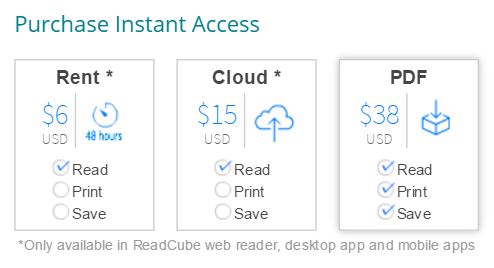Yesterday, at 5:44PM, the table of contents of the winter issue of the Journal of Policy Analysis and Management hit my inbox. The issue includes a paper by Kerri Raissian titled “Hold Your Fire: Did the 1996 Federal Gun Control Act Expansion Reduce Domestic Homicides?” Perhaps, in time, I’ll read and comment on it, but I want to first get a few things off my chest about how it was released.
From time to time I’m asked by the editors of academic journals how to increase the reach and impact of the work they publish. Sometimes I feel like they’re looking for that secret thing they can do with almost no effort that will suddenly boost their journals’ relevance.
The truth—as far as I know—is there is no such thing. There’s no magic. There’s just hard work, which begins with paying attention to some very basic things.
Let’s take Raissian’s article as a case study. Right now, the subject of her paper—gun control and its relationship to homicides—is hot. That’s an understatement. It’s burning with the heat of 1,000 suns. This is exactly the time to maximally promote this paper.
But, what did the journal do? I see three mistakes.
1. A 5:44PM Friday release of a table of contents is a good way to get people to ignore it. There’s a reason administrations release controversial or embarrassing news late on Fridays. People, including journalists, are less likely to pay attention. That’s not what a journal should want.
Tip #1: Release tables of contents in the first half of the work week.
2. As best I can tell, this journal does no outreach to journalists, which is a fairly common oversight. Was there a press release? Is there a way for journalists to get on a list to get them automatically? Was an embargoed copy circulated? From what I can see, the answers to all these questions is “no.” (If someone shows me otherwise, I’ll update this. Suffice it to say, using my press affiliation, I’ve tried to get on every media distribution list of every health policy relevant journal. Many don’t have one. This is bad.) Even if a journal does not want to invest in the infrastructure to do these things regularly, it should be obvious that making an exception in this case (or similar ones) would help the journal achieve greater reach. Again, the subject of this paper is red hot. Now is the time to make sure it gets noticed. It’s when people care.
Tip #2: Promote research when people care, even if it isn’t in the latest issue.
3. The paper is gated. Clicking on the link for the PDF gets you this:
Hey, journalists and policymakers, want to read our red hot paper? Pay up! This is not a good approach. The journal actually ungated a few articles in this issue, just not this one. The paper just after this one is ungated, for instance. So close! (Perhaps authors pay for ungating. I don’t know. If a journal wants to make ungating a revenue center, OK. But it won’t maximize reach and influence if the right papers aren’t ungated.)
Tip #3: Ungate hot papers, even if temporarily.
There may be very fine, business reasons for all these things. I’m not contesting that. But, if an editor comes to me asking how her journal can be more influential, my first response will be, “Pay attention!” If you don’t know that an issue is smoking hot AND you have a paper on that issue coming out AND you don’t make it accessible for free AND you don’t tell journalists about it AND you send your announcement out on Friday night, I give up. This is on you.
Final tip: You get the influence you work for. Do little work and the meager influence you earn is what you deserve.
PS: Listen to a podcast about this paper here. I have not listened to it myself.
PPS: It has not escaped my mind that, perhaps, publishers, not editors are responsible for some of these dissemination problems. Fine, editors need to push their publishers. Publishers need to pay attention to their editors.




